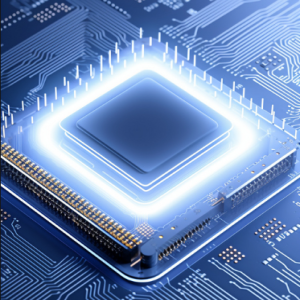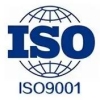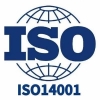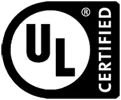In-depth understanding of radar sensor and infrared sensor applications

In the development of modern science and technology, sensors, as a key sensing component, play a vital role in many fields. Among them, radar sensors and infrared sensors are two types of sensors widely used in industry, transportation, military and daily life. Each of them has its own unique working principle and application scenario, which provides important data support for various tasks.
▲ Radar sensor
Radar (Radio Detection and Ranging) sensors use the reflection principle of electromagnetic waves to detect and measure targets. The principle is to transmit electromagnetic waves, wait for the waves to be reflected by the target and then receive the reflected waves, using the signal propagation time and frequency changes and other information to calculate the distance, speed and direction of the target.
Applications of radar sensors:
1. Traffic monitoring and management: Radar sensors are widely used in traffic flow monitoring and vehicle speed detection. On highways and major roads, radar sensors monitor speed in real time, helping traffic authorities with flow control and accident prevention. Through data analysis, the traffic department can quickly understand the road conditions, adjust the signal light and traffic flow guidance plan, and greatly improve the traffic efficiency.
2. Aerospace: Radar sensors are widely used in the aerospace field, mainly for aircraft navigation and target recognition. Air traffic control at airports relies on radar technology to ensure aircraft take off and land safely. In addition, weather radar monitors weather conditions through the principles of reflection and scattering, helping meteorologists to predict weather changes.
3. Defense and Military: In the military field, the role of radar is particularly important. It is widely used to detect and track enemy aircraft, missiles and other potential threats. Radar systems can provide real-time imagery, enabling commanders to respond quickly. In addition, ground radars can also be used to monitor enemy activity and improve combat readiness.
4. Ocean detection: Radar sensors are used in the Marine field for ship navigation and ocean monitoring. Marine radar can detect wind waves, high tides, floating objects and ships, etc., to provide support for shipping safety. At the same time, Marine weather radar also helps scientists study the relationship between ocean dynamics and climate change.
5. Autonomous driving: In autonomous driving technology, the 20FD15HN radar sensor is a key component to achieve environment awareness and obstacle detection. It is able to accurately identify objects in the surrounding environment, including pedestrians, other vehicles, and static obstacles, in real time, thus providing the necessary decision support for autonomous driving algorithms.
▲ Infrared sensor
Infrared sensors are devices that use infrared radiation for detection. They can sense the infrared radiation emitted by objects and are commonly used for temperature measurement, volume monitoring and dynamic detection.
Applications of infrared sensors:
1. Security monitoring: Infrared sensors are widely used in security and monitoring systems, especially in night monitoring scenarios. Infrared cameras provide clear images in low-light environments to help security personnel monitor and warn of potential security threats. In addition, the infrared intrusion detector can trigger an alarm when it senses human thermal radiation, providing effective anti-theft protection.
2. Environmental monitoring: In environmental science, infrared sensors are used to monitor gas emissions, air quality, etc. Especially in greenhouse gas monitoring, infrared sensors can detect changes in the concentration of greenhouse gases such as carbon dioxide and methane, and provide a basis for formulating environmental protection policies.
3. Medical health: In the medical field, infrared sensors are used for non-contact temperature monitoring, especially during the epidemic prevention and control period. By detecting infrared radiation from the human body, the body temperature of the person is measured to facilitate early disease screening. In addition, infrared thermal imaging technology is also used in tumor detection and other aspects to help doctors make diagnoses.
4. Industrial automation: In industrial automation and process control, infrared sensors are used to monitor the temperature of equipment to ensure the safe operation of the working environment. At the same time, in the production furnace cellar or high temperature environment, infrared sensors can monitor the temperature in real time, providing data support and reducing the risk of accidents.
5. Home elements: In smart homes, infrared sensors are widely used in automation equipment, such as smart lighting, air conditioning and security systems. Infrared detection technology can sense the movement of occupants and make intelligent adjustments accordingly to improve the comfort and security of living.
▲ Comparison of radar sensor and infrared sensor
Although radar sensors and infrared sensors differ in their working principles and application fields, they also occupy an important position in modern technology. Radar sensors are superior for long range detection and bad weather conditions, while infrared sensors are superior for energy consumption and accurate temperature measurements. The two complement each other, and their respective advantages make them play an irreplaceable role in different application scenarios.
With the continuous progress of science and technology, the technology of radar sensors and infrared sensors has also continued to evolve, and the introduction of new materials and algorithms has made them continuously improve in measurement accuracy, reaction speed and anti-interference ability. The fusion application of various sensors is also promoting the development of automation and intelligence, which is widely used in intelligent transportation, automatic driving, smart home and other fields, improving people's quality of life and work efficiency.
The Products You May Be Interested In
 |
TPCM-2.4-5 | CMC 2.41MH 5A 2LN TH | 6894 More on Order |
 |
AA53002-015 | XFRMR TOROIDAL 300VA CHAS MOUNT | 8352 More on Order |
 |
62054-P2S02 | XFRMR TOROIDAL 15VA CHAS MOUNT | 3526 More on Order |
 |
62045-P2S02 | XFRMR TOROIDAL 10VA CHAS MOUNT | 2430 More on Order |
 |
62035-P2S02 | XFRMR TOROIDAL 7VA CHAS MOUNT | 6642 More on Order |
 |
62034-P2S02 | XFRMR TOROIDAL 7VA CHAS MOUNT | 7938 More on Order |
 |
62025-P2S02 | XFRMR TOROIDAL 5VA CHAS MOUNT | 3924 More on Order |
 |
62021-P2S02 | XFRMR TOROIDAL 5VA CHAS MOUNT | 5058 More on Order |
 |
62073-P2S02 | XFRMR TOROIDAL 35VA CHAS MOUNT | 5292 More on Order |
 |
70072K | XFRMR TOROIDAL 35VA THRU HOLE | 5634 More on Order |
 |
70054K | XFRMR TOROIDAL 15VA THRU HOLE | 4716 More on Order |
 |
70043K | XFRMR TOROIDAL 10VA THRU HOLE | 5562 More on Order |
 |
70041K | XFRMR TOROIDAL 10VA THRU HOLE | 2826 More on Order |
 |
70024K | XFRMR TOROIDAL 5VA THRU HOLE | 8748 More on Order |
 |
70003K | XFRMR TOROIDAL 1.6VA THRU HOLE | 2520 More on Order |
 |
70002K | XFRMR TOROIDAL 1.6VA THRU HOLE | 5040 More on Order |
 |
62015-P2S02 | XFRMR TOROIDAL 3.2VA CHAS MOUNT | 3780 More on Order |
 |
70025K | XFRMR TOROIDAL 5VA THRU HOLE | 4068 More on Order |
 |
62033-P2S02 | XFRMR TOROIDAL 7VA CHAS MOUNT | 6480 More on Order |
 |
62060-P2S02 | XFRMR TOROIDAL 25VA CHAS MOUNT | 23778 More on Order |
 |
70034K | XFRMR TOROIDAL 7VA THRU HOLE | 8088 More on Order |
 |
70005K | XFRMR TOROIDAL 1.6VA THRU HOLE | 7218 More on Order |
 |
AC1200 | CURR SENSE XFMR 200A T/H | 2142 More on Order |
 |
AC1050 | CURR SENSE XFMR 50A T/H | 7362 More on Order |









